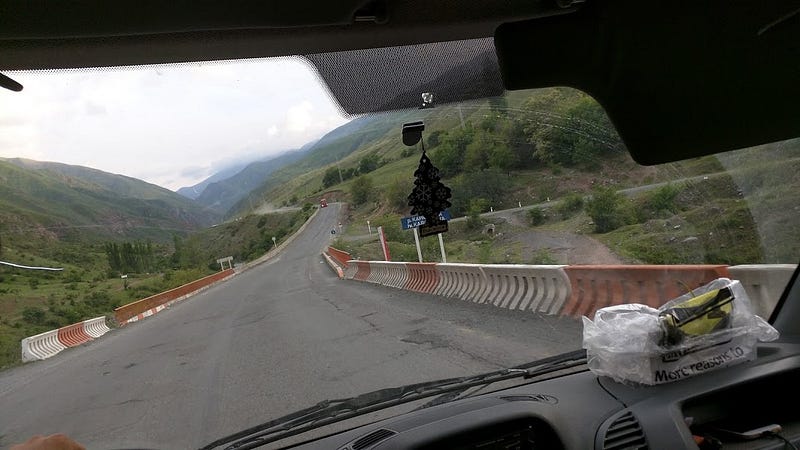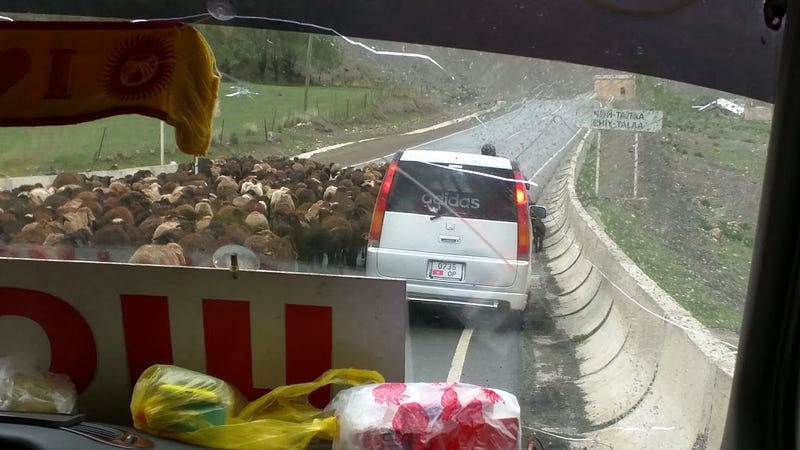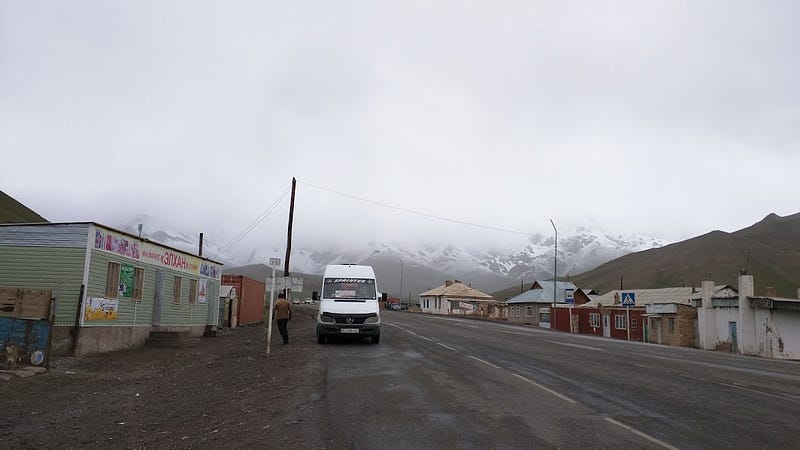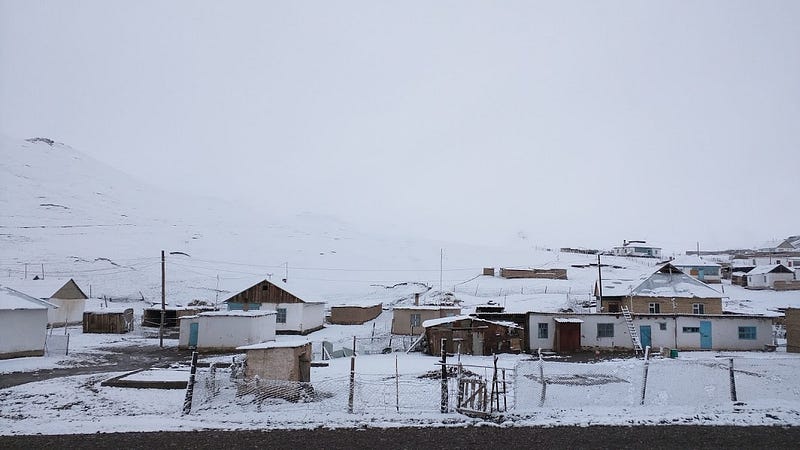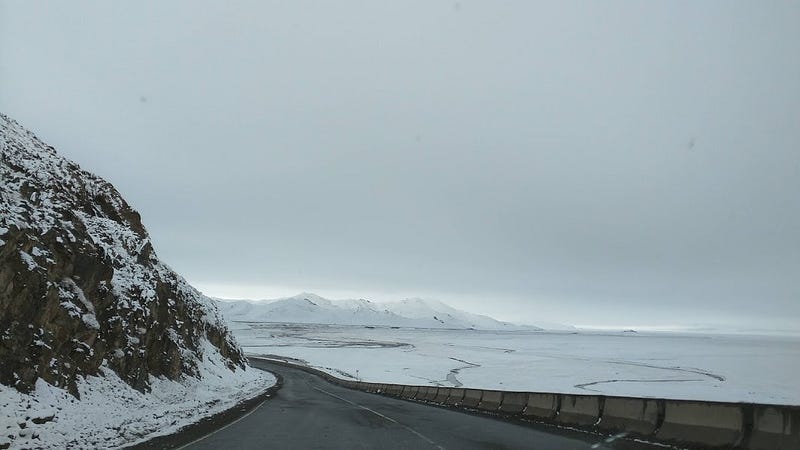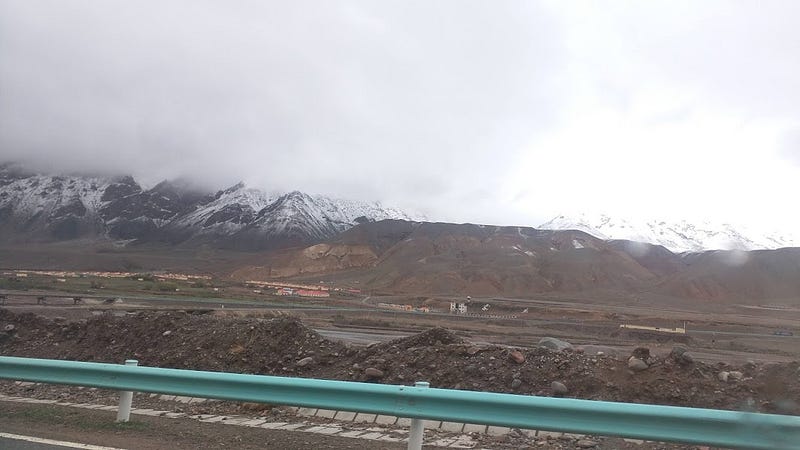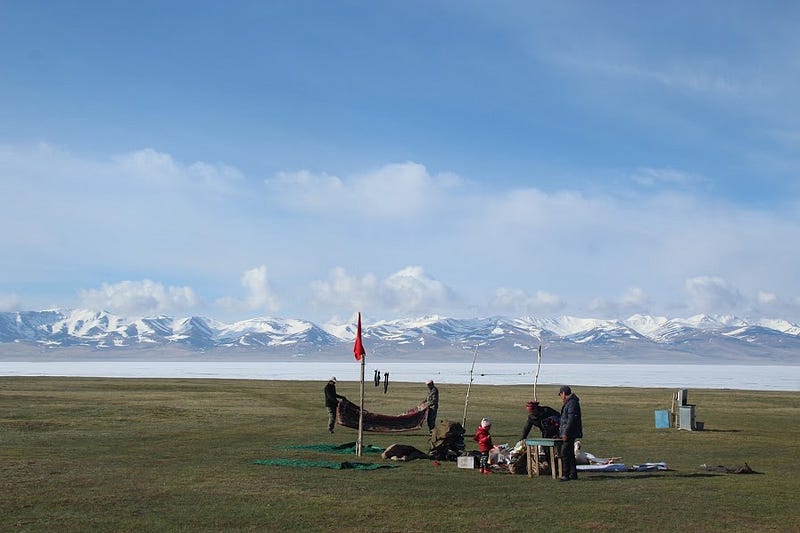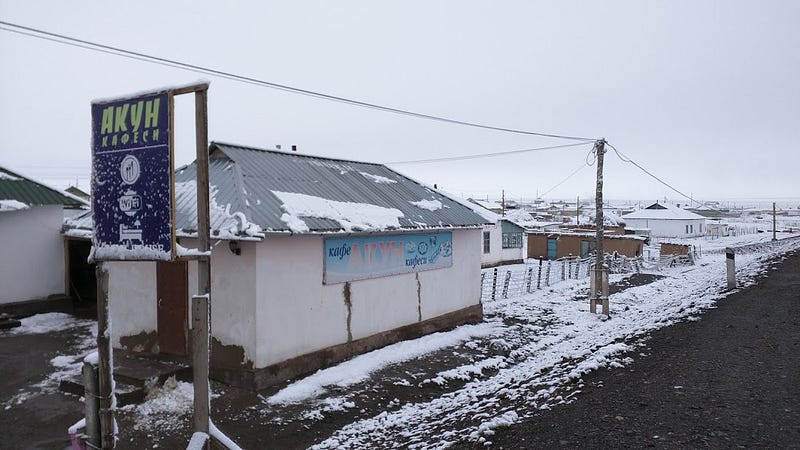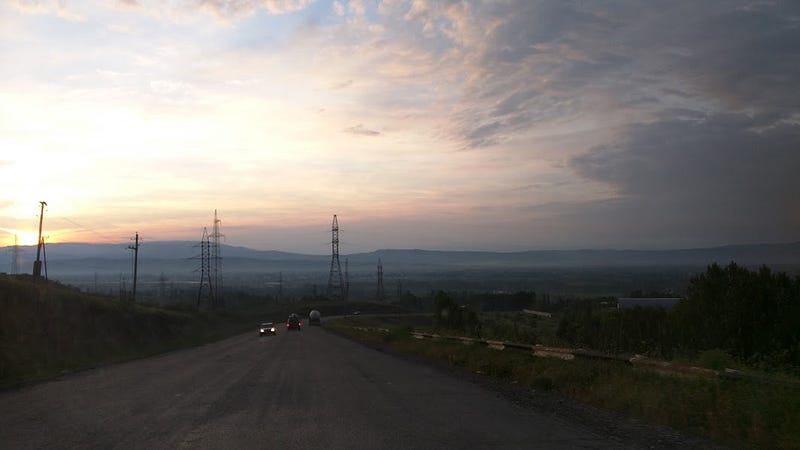Road to the Sky: Pamir Highway, Kyrgyzstan
▮ Jerome Yang / 2019/08/15
The most adventurous part of my grand trip in 2018: from Bishkek, the capital of Kyrgyzstan to Kashgar, a major city in China’s Xinjiang (so-called) Autonomous Region. While it should take only an hour to fly, I chose a much more strenuous way: moving over the Pamir Mountains, where the average elevation is well above 10,000ft, by some unusual ways: cargo van, martshrutka, hitchhiking, and shared taxi.
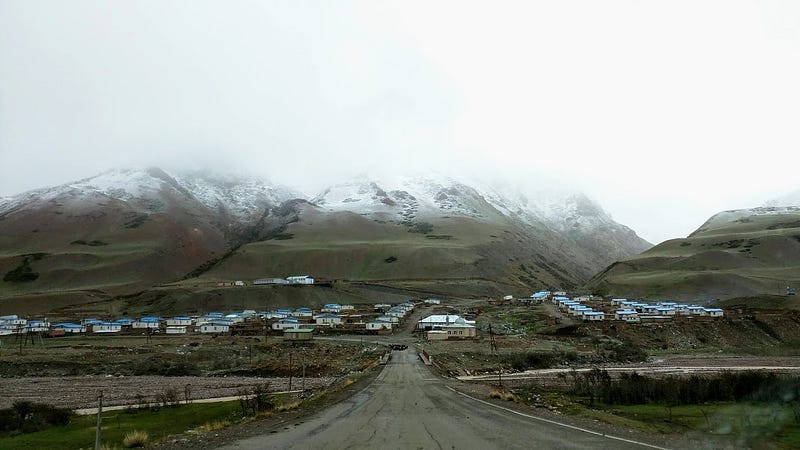

Overview of the journey
Part 1: Bishkek -> Osh, 700km, by a cargo van
While quite unusual, cargo van may be the best way to move between the two largest cities of Kyrgyzstan. Why? Because Kyrgyzstan is an extremely mountainous country. It takes at least 12 hours in a crowded taxi to cover this narrow and curvy road. Cargo van, while slower, usually runs at night and has a bunker bed (or to be more precise, a wooden panel) above the cargos for you to sleep overnight.
Since it’s by a cargo van, the trip didn’t start at a bus terminal; instead, it started at a loading area of Dordoy Bazaar, one of the largest public markets in the world. A dozen of cargo vans were filled with various goods, particularly products of China. After making some effort to explain what I wanted with gestures, we headed toward the south and crossed 3 major mountain ranges. While sleeping most of them time, I could tell it was a very strenuous drive. The cargo van arrived in Osh in the early morning (5/20).
Dordoy Bazaar
The wooden panel on top of cargos behind the driver seat, where I slept overnight on the way
Mountainous highway between Bishkek and Osh
Part 2: Osh -> Sary-Tash, 185km, by a marshrutka (all-purpose minibus)
Again, it was hard to find where the marshrutka departed. When we headed out around 14:00, the locals had filled the bus with items ranging from ingredients, dehydrate food, milk to bicycle and washing machine. This once-a-day minibus is the only means of public transportation along the Pamir Highway.
Throughout the trip, the driver often made phone calls before approaching villages, so that the locals would wait on the roadside to pick up things they asked for. As the elevation got higher, he also had to honked very aggressively on sheep herds that blocked the highway. The whole experience was quite novel to me. After crossing a mountain pass in a snowstorm, I lodged at a guesthouse in Sary-Tash, as the only guest of the village that night.
Battling with sheep herds along the way
Arrived in Sary-Tash
Part 3: Sary-Tash -> Irkeshtam, 70km, by hitchhiking
The next morning (5/21), the entire Sary-Tash as well as all the mountains around were covered in snow. It was a cloudy day, and I wasn’t even sure if the highway was still open. Fortunately, after 40 minutes waiting on the roadside, two very nice gentlemen stopped and picked me up. They were both officers at the border and very familiar with the road condition. They drove me safely through a blizzard, and we had pleasant conversation throughout the trip. With their hospitality, I successfully arrived at the border shortly after 9:00.
Snow-covered Sary-Tash
On the journey toward Irkeshtam
Part 4: Irkeshtam -> Kashgar, 240km, by shared taxis
Entering China was a quite interesting experience for me, particularly because I am a Taiwanese but didn’t hold the document that most Taiwanese usually use. And in general, for political reasons, security check at China’s western border has been known for its strictness — not only every item from your bag needed to be checked, but even all the electronics (phone, computer, camera, USB, etc) were to be scanned. Privacy was basically non-existent here. Finally, after 4 separate checkpoints and hours of wait, my travel document got stamped. But do you think that was the end? Not yet! Before you walk out of the border area, your phones need to be scanned again by the police…
Yes, don’t be surprised. This was what was going on in western China, and still is today. I’ll talk more about it in my next post.
After crossing the border
Other highlights of Kyrgyzstan
Among the 5 Central Asian countries, Kyrgyzstan is known for its natural beauty. Many westerners come here for trekking, horse-riding or yurt-stay. Among various places, I strongly recommended Song Kol Lake, an almost uncontaminated heaven for all of the activities above. If you visit in summer, several tour agencies at Kochkor can offer 2-day or 3-day all-inclusive horsing-riding plus yurt-stay tours for $100-200 per person. When I visited in mid May 2018, two agencies were in business: CBT and Shepherd’s Life. You can easily find their reviews online. I chose the latter without reservation in advance, and the experience was great.
Song Kol
If you’d like to go…
-
Kyrgyzstan now offers e-visa for most nationals (http://www.evisa.e-gov.kg/). It costed roughly $27 at the time I applied (April 2018) and was approved almost immediately. If you’re a citizen of Taiwan, choose “China” as your nationality, but tell the officer that you actually hold a Taiwanese passport upon arrival, as they won’t find your record in the visa system under “China”.
-
Bishkek: if you’d like to take cargo van to Osh, arrive at Dordoi Bazaar between 15:00 and 17:00, as many vans leave for Osh within that window. Note that the location is not easy to find. The closest placemark on GoogleMaps is Trans Asia Ekspress (as shown below). It’s possible to bargain down to 700KGS, although I paid 900KGS for a more spacious van to sleep overnight. Buy food at the market before the van leaves.

- Osh: the location to catch the Osh -> Sary-Tash marshrutka is right under the bridge of the A373 highway, next to the Osh Bazaar. The marshrutka should depart daily at 13:30, although it’s not uncommon for the driver to wait for more people to fill up. While some travelers reported a cheaper price, I paid 350KGS.

- Sary-Tash: While you can find many guesthouses on booking websites, at the time of my visit, only Hotel Akun (Гостиница Акун) was actually open. One-night stay plus dinner and breakfast costed 900KGS (May 2018). Wifi was available, but don’t expect hot water or shower when you’re well above 3000m. To hitchhike to Irkeshtam, wait on the roadside toward the east in the early morning. Note that the border is open only on weekdays.
Hotel Akun
- Irkeshtam: leaving Kyrgyzstan is easy, but entering China can be a bit painful. Expect everything to be dumped and checked. Between Irkeshtam checkpoint and the actual port of entry Ulugqat, you’d be carpooled with other passengers in a shared taxi for 100RMB. The trip takes 2 hours. Xinjiang is now notorious for the government’s overwhelming surveillance, although you shouldn’t run into any problem as a foreigner. I will share more about that in my next post.
Early morning view before arriving in Osh


